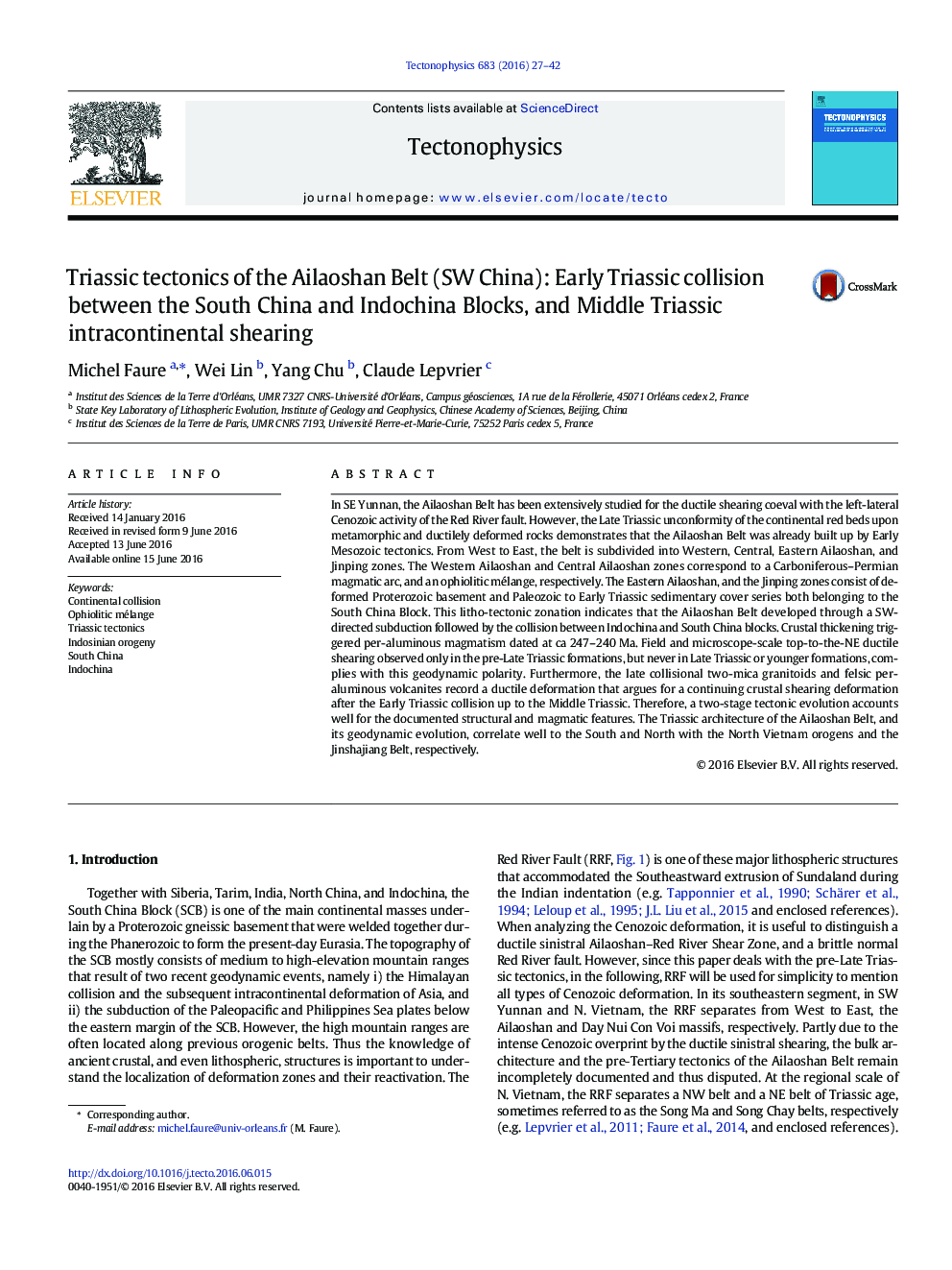| کد مقاله | کد نشریه | سال انتشار | مقاله انگلیسی | نسخه تمام متن |
|---|---|---|---|---|
| 6433365 | 1636715 | 2016 | 16 صفحه PDF | دانلود رایگان |

- The collision between Indochina and S. China blocks was accommodated by a southwestward subduction.
- A ductile top-to-the-NE ductile shearing characterizes the Ailaoshan Belt.
- The Early Triassic collision triggered late-orogenic crustal melting, followed by Middle Triassic top-to-the-NE shearing.
- A detail tectonic correlation between the Ailaoshan and Vietnam belts is provided.
In SE Yunnan, the Ailaoshan Belt has been extensively studied for the ductile shearing coeval with the left-lateral Cenozoic activity of the Red River fault. However, the Late Triassic unconformity of the continental red beds upon metamorphic and ductilely deformed rocks demonstrates that the Ailaoshan Belt was already built up by Early Mesozoic tectonics. From West to East, the belt is subdivided into Western, Central, Eastern Ailaoshan, and Jinping zones. The Western Ailaoshan and Central Ailaoshan zones correspond to a Carboniferous-Permian magmatic arc, and an ophiolitic mélange, respectively. The Eastern Ailaoshan, and the Jinping zones consist of deformed Proterozoic basement and Paleozoic to Early Triassic sedimentary cover series both belonging to the South China Block. This litho-tectonic zonation indicates that the Ailaoshan Belt developed through a SW-directed subduction followed by the collision between Indochina and South China blocks. Crustal thickening triggered per-aluminous magmatism dated at ca 247-240Â Ma. Field and microscope-scale top-to-the-NE ductile shearing observed only in the pre-Late Triassic formations, but never in Late Triassic or younger formations, complies with this geodynamic polarity. Furthermore, the late collisional two-mica granitoids and felsic per-aluminous volcanites record a ductile deformation that argues for a continuing crustal shearing deformation after the Early Triassic collision up to the Middle Triassic. Therefore, a two-stage tectonic evolution accounts well for the documented structural and magmatic features. The Triassic architecture of the Ailaoshan Belt, and its geodynamic evolution, correlate well to the South and North with the North Vietnam orogens and the Jinshajiang Belt, respectively.
278
Journal: Tectonophysics - Volume 683, 30 June 2016, Pages 27-42